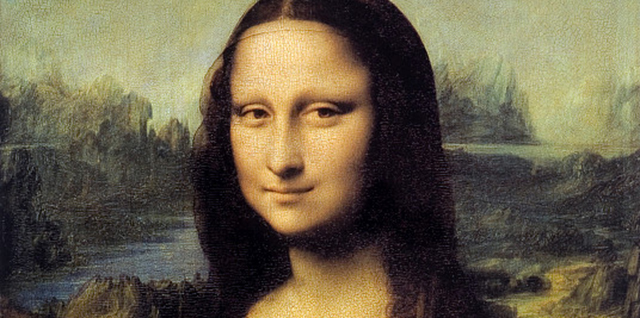(单词翻译:单击)
Secret of her smile
蒙娜丽莎微笑的秘密
Italian artist Leonardo da Vinci's Mona Lisa is one of the most renowned paintings in the art world. Interest in the sixteenth-century portrait, which is probably of Lisa del Giocondo, the wife of merchant Francesco del Giocondo, has always focused on one particular detail: her expression.
意大利画家达·芬奇的《蒙娜丽莎》是艺术界最负盛名的画作之一。这幅16世纪的肖像画或许画得是商人弗兰西斯科·吉奥康杜的妻子丽莎·吉奥康杜,但人们的关注点总是停留在画作的一个细节上:她的表情。
People have different opinions about it. Some people think that she is smiling, while others believe she is grimacing.
人们对于她的表情有着不同的看法。一些人认为她在微笑,而还有一些人则觉得她看起来愁眉苦脸。
Could she have been doing the Renaissance equivalent of "smiling for the camera"? That is, putting on a display of happiness that she didn't really feel? Or is it a sincere smile, and we viewers are reading into it too much?
她的微笑是文艺复兴版的“镜头前微笑”,假装自己很开心?还是发自内心的微笑,却被观赏者们过分解读了?

According to scientists at the University of California, US, if Mona Lisa doesn't look happy to you, it might be because of your own mental state.
美国加州大学的科学家们认为,如果你觉得蒙娜丽莎看起来不开心,或许与你的心理状态有关。
The scientists' study, published in Psychological Science in April, is based on the theory that the brain is a predictive organ that looks to past experiences to know what to expect from the future.
科学家们的这项研究今年四月发表于《心理科学》期刊上,该研究所基于的理论是,人类大脑是个预测性器官,能从过去的经历中预见未来。
The researchers showed 43 people several pairs of faces at the same time. One set of faces had neutral expressions, while the other set had expressions that were sometimes happy, sometimes neutral and sometimes angry.
研究者们同时向43人展示了几对面部表情图片。一组图片的面部表情为中性,而另一组图片中,有的表情是开心,有的则是中性或者愤怒。
After people looked at the faces, they were encouraged to describe the emotions on the faces in the neutral images they had seen. Scientists discovered that an image of a neutral expression was more likely to be read as a smile or a grimace when it had been shown alongside a face with a smile or a grimace.
人们在看过这些面部表情后,被要求形容先前看过的中性表情所表露出的情绪。科学家们发现,中性表情图像和笑脸或者苦瓜脸放在一起时,更容易被认为是微笑或者愁眉苦脸。
"We are the architects of our own experience. Our brain makes predictions about what it expects to see and uses information from the world to update its expectations," the researchers explained to Science Daily.
“我们是自我经历的建筑师。我们的大脑会对看到的事物做出预测,并利用从世界中获取的信息更新预期,”研究人员们向《科学日报》解释道。
Indeed, our emotions change our perceptions of the world around us, including works of art. "If you see the Mona Lisa after you have just had a screaming fight with your husband, you're going to see the painting differently," said Erika Siegel, one of the researchers. "But if you're having the time of your life at the Louvre, you're going to see the enigmatic smile."
情绪的确会改变我们对于周遭世界的认知,包括艺术品。“如果你和丈夫大吵一架后跑去看《蒙娜丽莎》,你会看到一幅不同的画作,”研究人员之一的艾瑞卡·西格尔表示。“但如果你很享受在卢浮宫度过的时光,你会看到她谜一般的微笑。”


